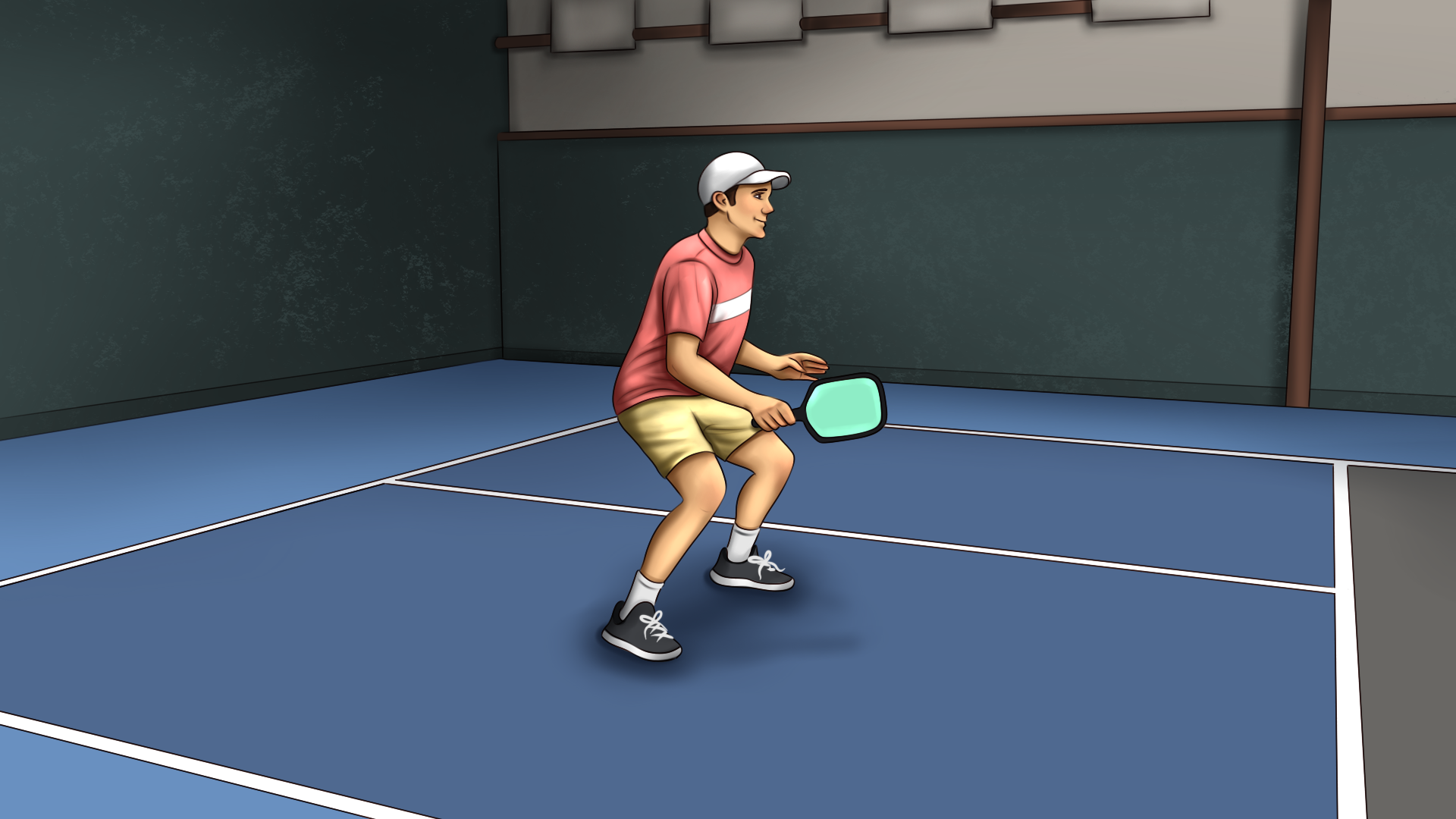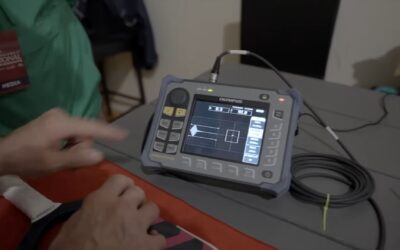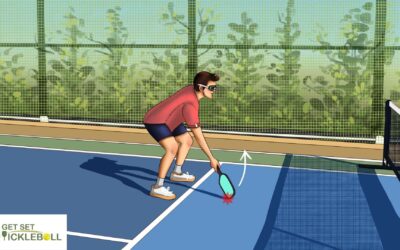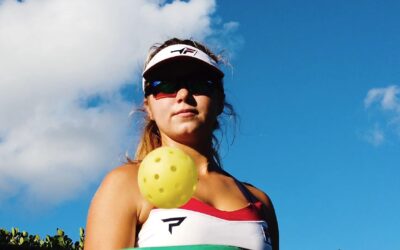Introduction
Have you ever had the impression that something is preventing you from improving your shots on the court? I have also been there. My obsession when I started playing pickleball in the initial years was perfecting my paddle technique and learning shot strategies. But, even with my best efforts, I continued to feel out of rhythm with the game, react slowly, and miss opportunities. I then discovered that I had totally neglected footwork, which is one of the most important components of playing pickleball like a pro.
Did you know that players who practice footwork drills can increase their speed by up to 30%, leading to better performance during matches. In this dynamic world of pickleball, players quite frequently prioritize paddle skills and shot strategies, inadvertently avoiding a crucial component: footwork. While it is absolutely easy to focus on the more conspicuous aspects of the game, neglecting footwork can destroy the entire gameplay and have a noticeable impact on the player’s progress. So, how can players tackle it? If you are someone who is wanting to ultimately master this game-changing skill, enhance your agility, precision and the overall performance on the court, you are at the right place.
Why is Footwork critical in Pickleball?
It is undoubtedly clear that footwork serves as the foundation for effective gameplay in pickleball. Have you ever wondered what makes it indispensable? Let me break it down.
The foremost reason is the court positioning enhancement. If you’re good at footwork, you can optimally prepare yourself on the court to return the shots with mere accuracy, making it a bit harder for opponents to exploit gaps. It reduces the chances of leaving open spaces for your opponent to capitalize on the game. The other one could reasonably be the improvization of shot accuracy and consistency. This simply depicts that, if you are at the right spot, the shot execution is way better, leading to more reliable plays. And, last but not the least, reduced fatigue and injury prevention. Effective strategy implementation with regards to footwork minimizes undue stress on joints, reducing the risk of injuries.
Usually, beginners in pickleball commit a ton of errors, like standing flat-footed, overstriding, adopting inappropriate ready position and more, which will be discussed in depth in the upcoming areas. These mistakes, many at times, can lead to late reactions, improper shot execution and balance disruption. Thereby, mastering footwork in the early years helps in positioning and control, ensuring zero chances of such unforeseen faults.
The Core Principles of Effective Footwork
-
Balance and Stability:
Every shot in pickleball drastically turns out to be great only with a stable foundation. Both power and precision of the player can crash down without balance. A steady balance comes with a proper shoulder-width stance, knees bent slightly and a good posture of the player. Proper head and chest posture can shift the entire performance, by influencing balance, stability and reaction time. It is advised to keep your head up and eyes to track the ball rather than excessively moving your head. Since the head is relatively heavy, unnecessary bobbing forces constant repositioning, which can throw off stability and reaction time. Instead, maintaining a steady head position while engaging your core and keeping your chest upright allows for better control during the matches.
-
Efficiency of Movement:
Sometimes, excess movement can waste energy and slow down reaction time. If you’re well-trained in footwork, the chances of unnecessary steps are minimized, leading to better control of the game. The better you are at efficiency in footwork, the faster you can conserve more energy.
-
Opponent Observation:
Bright players tend to anticipate during gameplays in pickleball. A pro player is one who could read out the paddle angle, stance and court position of opponents to predict their shots and move proactively. Mastering this skill shows that you are always a step ahead in the game, by controlling rallies instead of chasing the balls. Maintaining a consistent visual and keeping your body oriented toward the opponent ensures continuous observation of their moments and shot intentions especially while executing footwork techniques like side shuffling and crossover steps.
-
Weight Transfer and Foot Positioning:
Transferring weight in pickleball enhances both power and speed. It is advisable for the players to shift weight onto the front foot while stepping forward and prioritize their balls of the feet rather than heels. This will keep them balanced and energized regardless of whether striking or receiving the ball.
-
Transferring momentum:
Transferring momentum in pickleball is key to maintaining balance and court control. In pickleball, maintaining these aspects comes from moving forward while hitting the ball. This aids for a smoother transition and quicker positioning at the kitchen line. Using a “V” pattern or diagonal steps allows for quicker movement for staying balanced. The tip here is to be proactive, ensuring smooth transitions between shots.
Techniques and Strategies in Footwork
-
Split Step:
In theoretical terms, it is one of the most significant movements that actually prepares the players to react to what the opponents are throwing at them. It acts as a balance booster and a game changer in the movement efficiency. When performing a split step, the player slightly jumps off the ground, landing with the feet shoulder-width apart and knees partially bent. So, whenever the opponent strikes the ball, you can readily prepare yourself to react quickly and explode in any direction. Another aspect of an effective split step is lowering down the centre of gravity, which enhances stability and control. This basically sets the player low and balanced for generating explosive power and allowing players to move in any direction with greater efficiency. Instead of reacting late or losing balance, players must be ready to accelerate regardless of the shots. check out this video below:
-
Side Shuffling:
It is a fundamental footwork technique that allows players to move side-by-side rather than a steady forward or backward position for maintaining balance and stability during the matches. This lateral movement ensures quick reactions and is prevalently used at the kitchen line and during volleys. To enhance the lateral effect, players should more likely focus on pushing off with the inside leg. What exactly does this mean? When a player moves to the left, they should push off with their right leg to propel themselves in that direction, avoiding unnecessary crossovers. This movement helps maintain stability, react faster, and stay in position for the next shot.
For a clear example of side shuffling in action, feel free to check out this below video around the 1:20 mark and beyond, where the movements are demonstrated in play.
-
Crossover Steps:
Cross over steps can come in handy when players seek to move quickly over long distances by crossing one foot over the other instead of shuffling. This technique is super beneficial for chasing wide shots covering from the baseline to the kitchen line. It fortunates by providing greater speed and efficiency in the game.
For a precise view of crossover steps in action, refer to this video below, where the instructor illustrates how to execute cross over steps.
-
Baseline and Kitchen line footwork:
Footwork at the baseline and kitchen line conveys whether you’re on the attack or defense. Players are expected to take quick and controlled steps for smooth execution in case of fast drives and a well-timed split step to get rid of flat-footed mistakes at the baseline. Likewise, small lateral steps to get adjusted to volleys without overextending the kitchen line is another brilliant
strategy to master footwork. - At the kitchen line, footwork differs significantly. A low, wide base on your toes keeps you balanced and ready to react. Instead of excessive movement, taking one big step in either direction, followed by a return to a neutral stance improves efficiency. Thus, the strategy “less is more” always works out well in the kitchen line. Also, pivoting back is often easier than taking multiple steps, allowing for a better positioning against your opponents.
For a practical demonstration of kitchen line footwork, refer to this below Video at 10:13 to 13:27 mark.
-
Clock lunges or pivoting your one leg:
Clock lunges is a controlled footwork technique designed to improve balance, stability, and shot execution by lunging in a circular pattern. The player starts at a neutral position and lunges forward to the 12 o’ clock position, then continues moving clockwise to 3,6 and 9 o’clock, using the outside foot for each step. Unlike speed oriented practice, this technique would focus on control and precision, aiding players develop better weight transfer and shot stability.
- For visual demonstrations, check out following video:
Drills to Improve Pickleball Footwork
Agility Ladder Drills:
Agility ladder drills are like a must-have in any pickleball training routine, which enhances foot speed, coordination and quick directional changes. The players move through the ladder-like structure sideways using patterns such as in-and-out motions to develop better balance and reaction time. This would help the players to stay mobile at the kitchen line and react quickly to incoming shots.
Watch this video for a hand-on demonstration.
Shadow Footwork Drills:
Shadow footwork drills simulate real-game scenarios, teaching players to anticipate shots and position themselves correctly without a ball. Players practice split steps, lateral movements, and more to strengthen their muscles for an efficient gameplay. They help players to handle fast-paced volleys seamlessly.
Check out this video for practical insight of this drill at 00.45 mark.
Cone Drills:
Cone drills focus more on precision and controlled footwork, helping players move strategically instead of reacting chaotically. Placing cones at different court spots encourages players to shuffle, pivot, and crossover step effectively. This is a perfect drill for boosting agility, and reducing unnecessary steps that can leave players off-balance.
For a practical demonstration, refer to this video at 1.40 mark.
Jump Rope Training:
This is literally a hidden gem for developing endurance and quick footwork in players. This drill focuses on strengthening ankles and calves, which is crucial for maintaining a strong stance and rapid transactions during play. Regular practices on jump rope techniques like single-line jumps, and alternative feet drills, ensures that players stay vigilant during the matches.
Check out this video to see it in action at 00.25 mark.
Split Step Reaction Drills:
A well-time split step can make the difference between getting to the ball on time or being a step too late. Split Step Reaction drills come into play to train players to time their footwork perfectly as their opponent strikes the ball. By incorporating this drill numerous times, players actually learn to react instantly, stay balanced and move efficiently.
Hit play on this video for visual insights at 00.39 mark.
Common Footwork Mistakes and Tips to avoid them
-
Leaning and not using footwork :
Leaning instead of using proper footwork is a common mistake, especially among players rated 3.5 and below. This happens when players rely solely on their upper body to reach the shots instead of moving their feet. The issue with this is that it disrupts consistency, causing the contact point to shift each time a player dinks.
-
Standing Flat-Footed:
One of the biggest mistakes players make is standing flat-footed, which many at times kills their ability to react quickly. Excellent Footwork requires staying on the balls of the feet, keeping knees slightly bent, and always being able to move in any direction. The tip here is to practice split steps consistently to ensure they remain light and active on the court.
-
Overstriding:
Taking exaggerated steps can disrupt balance and slow reaction time. Instead, the best way to tackle this mistake is that players should focus on small, quick movements that allow for more controlled positioning and efficient shot execution. Overstriding can become problematic when transitioning to the kitchen line because short, explosive steps work better for steady balance in movement.
-
Incorrect Ready Position:
A weak ready position, like standing in an upright posture or with an uneven stance obviously results in slow, inefficient movement. The ideal stance for pickleball involves knees bent, weight slightly forward, and paddle up, ensuring quick reaction time and better shot preparation. Players are advised to check their positioning frequently during drills to build consistency.
-
Late Cross Steps and Lunging:
Crossing feet too late when covering ground or overextending one leg too far forward in an attempt to reach a shot throws players off-balance, making it really harder to recover for the next shot. It would be great if players rely more on well-timed crossover steps and lateral movements to cover distance smoothly. Training with shadow drills and split step reactions can correct these mistakes and make footwork more efficient and controlled.
Footwork in Doubles
Doubles Pickleball requires not just individual footwork mastery but also seamless coordination with a partner. Players should move in unison, maintaining a side-by-side formation to cover the court effectively. Using small lateral steps ensures both players stay aligned, preventing large gaps that opponents can exploit. One best strategy that works in doubles footwork is communication. Partners should adjust positioning based on each other’s movement, keeping their coverage area balanced. Effective crossover steps and split-step timing helps players react faster to their opponent’s shots in doubles rally.






0 Comments